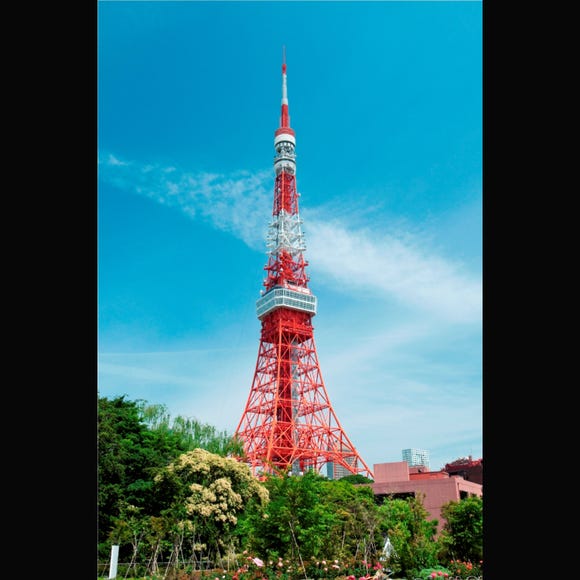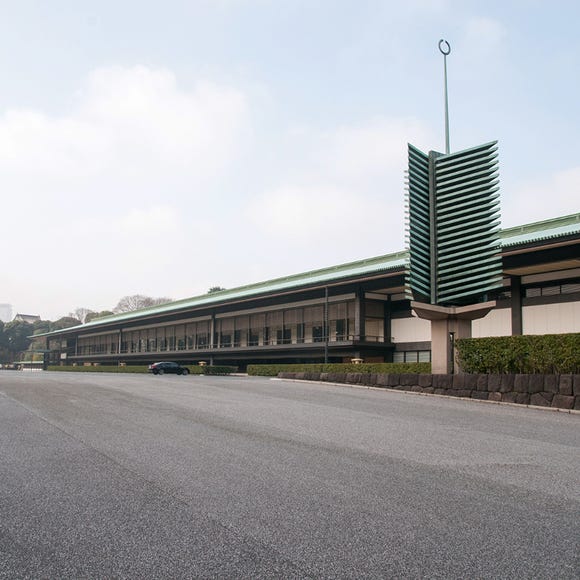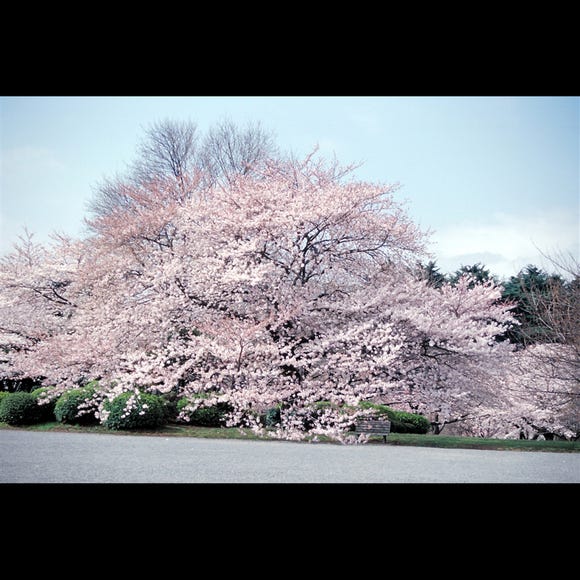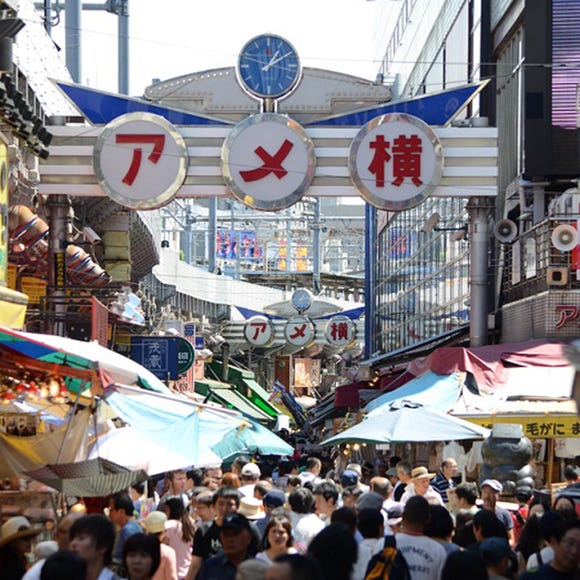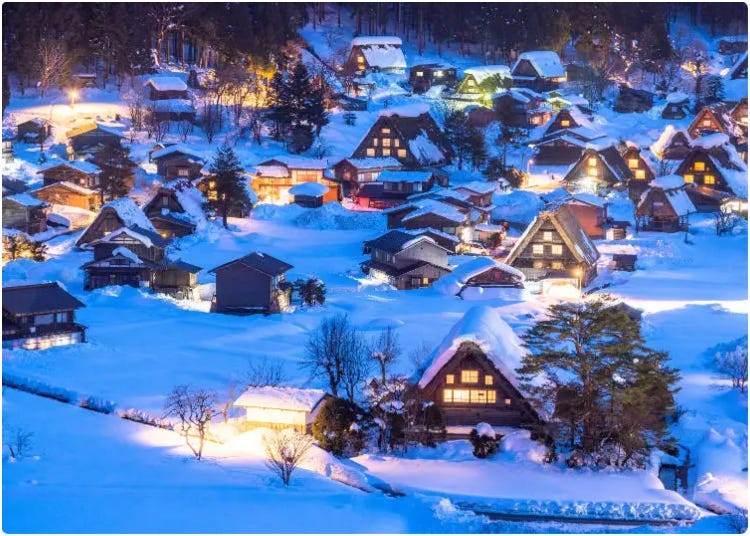
Deep within the heart of Gifu Prefecture, you'll discover the fairy-tale-like village of Shirakawa-go. A place where time seems to have paused, this traditional Japanese hamlet has charmed its way to becoming a favorite amongst travelers.
(Main image: PIXTA)
- Table of Contents
-
- What is Shirakawa-go famous for?
- How to get to Shirakawa-Go
- Shirakawa-go Winter Light-Up 2024
- Enjoy a stroll around Ogimachi Gassho-Zukuri Village
- Enjoy the beauty of Shirakawa-Go throughout the seasons
- Important things to note when exploring Shirakawa-Go
- World Heritage Site Gokayama and how it compares with Shirakawa-Go
- Recommended Shirakawa-go Tours
- Recommended places to stay in Shirakawa-go
Its historical legacy shone bright in 1976 when it was heralded as an Important Preservation District for Groups of Traditional Buildings in Japan. By 1995, its allure had reached international recognition as it, alongside the nearby village of Gokayama, was enshrined as a UNESCO World Heritage Site under the banner of the Historic Villages of Shirakawa-go and Gokayama.
In Shirakawa-go, every winding path and thatched roof tells a story of Japan's rich past. Visitors, both local and international, are irresistibly drawn to its preserved beauty and the echoes of an era long passed.
So, what treasures does Shirakawa-go hide within its folds? And how might one find their way to this dreamy realm? Let's take a look at the village's must-see wonders and navigate the path to this bewitching haven.
What is Shirakawa-go famous for?
Now, we can't talk about Shirakawa-go without first mentioning its iconic "gassho-zukuri" houses.
Gassho-zukuri means "made like clasped hands." It was so coined because the wooden houses of Shirakawa have thatched roofs shaped like hands clasped as if in prayer. Since there is a lot of snowfall in Shirakawa-go during winter, this clever architectural style allows the roofs to maintain enough flexibility to withstand the snow's weight without using metallic materials like nails.
Although the village is located in a mountainous region that gets very cold overnight, the multiple layers of dried grass stacked on the roof are good at keeping heat in the house. The slanted walls also provide a windbreak effect, and the steep incline of the roof allows the home to shed snow easily. The ancients who lived in this area certainly demonstrated a deep understanding of how to coexist with a snowy hinterland deep in the mountains in relative comfort!
The villagers also work together to rethatch the roofs once every 30 years or so. The strength of their spirit of mutual assistance and bond of unity is what helps them to overcome the region's harsh winters year after year. You could even say that this strength that is passed down through the generations is also part of the heritage being preserved here at Shirakawa-go.
We briefly touched on what gassho-zukuri is, but there's so much more to this ancient architectural style that simply cannot be described by words alone. So, swing by the village to admire the skillful handiwork of the forerunners who built this place and carefully consider how the houses' intelligent design allowed them to blend perfectly well into the surroundings to form the iconic landscape we are so familiar with now.
How to get to Shirakawa-Go
Getting to Shirakawa-Go from Nagoya
Most tourists will have to drive or take a highway bus to get to Shirakawa-go from their accommodations.
There is a direct bus to the village from Nagoya's Meitetsu Bus Center. The journey takes about 2 hours and 40 minutes and costs 4,000 yen for a one-way ticket or 7,200 yen for a round-trip ticket.
Getting to Shirakawa-go from Tokyo
Unfortunately, there aren't any direct buses from Tokyo to Shirakawa-go. We'll guide you through an alternate route via Hida Takayama, another charming tourist spot.
There are no direct buses from Tokyo to Shirakawa-go. Instead:
1. Start from Tokyo or Shinjuku:
・Take a highway bus, OR
・Use a Japan Rail Pass: Get the Shinkansen to Nagoya, then the JR Hida limited express to Takayama Station.
2. At Takayama Station, go to the connected Takayama Nohi Bus Center.
3. Take the express bus from there to Shirakawa-go. It runs about 22 times daily and the trip takes around 40 minutes in good traffic. Fares: One-way is 2,600 yen, and a round trip is 4,600 yen.
Buses are expected to be fully packed during annual long vacations like the Golden Week in late May, Obon in mid-August, Silver Week in late September, and the year-end and start of year season.
Since the buses do not take reservations and the highway may be congested during these periods as well, be sure to plan a lot of leeway into your schedule if you'll be visiting then.
Weekends are usually more crowded than weekdays as well, so to fully savor one of Japan's most olden landscapes without distractions, consider dropping by during a weekday if possible!
Shirakawa-go Winter Light-Up 2024
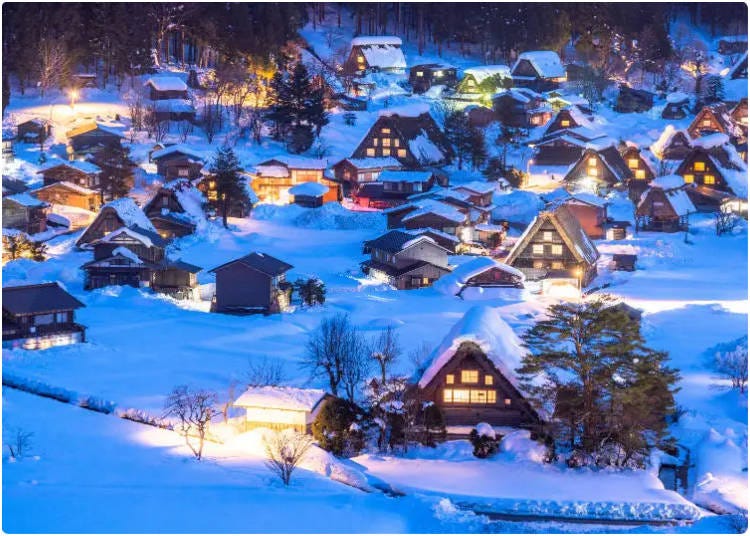
Shirakawa-go's winter evening illumination strictly requires prior reservations and an entrance ticket. Make sure to thoroughly review the following details on how to reserve and the necessary information!
- There are six scheduled illumination events on the following dates: January 14th, 21st, 28th; February 4th, 12th, 18th. Each illumination event runs from 5:30 PM to 7:30 PM.
- The event is by reservation-only and mandates an entrance ticket, accompanied by strict crowd control measures.
- Without an advance reservation, you won't be allowed to participate, even if you're onsite. Ensure to book ahead and secure your ticket. If you're without a ticket on the day, expect to be turned away. Moreover, on-the-day ticket sales are not available.
- An entrance ticket grants you a view of the village during its nighttime illumination. Yet, bear in mind that evening access to the observation deck is restricted.
- There are two ticket categories: one allowing access to the observation deck and the other not. It's worth noting that not all village visitors can access the deck. For specifics, consult the official website.
- A section of the Gassho-zukuri Village is recognized as a World Heritage site. Given its residential status, drone usage for filming is strictly off-limits.
Shirakawa-go Winter Light-Up 2024 Ticket Categories
To be part of the Shirakawa-go Lighting Event for 2024, it's crucial to book ahead and secure an entrance ticket. Attendees are provided with an ID badge, distinguished by color based on the event date, which must be prominently displayed around the neck during the event. Keep in mind, these badges are date-specific, aligning with your reserved day.
Five ticket categories exist, and post-booking, tickets will be handed out on the day of the event at various distribution points:
- Overnight stay in the village (with observation deck access)
- Parking reservations for personal vehicles (excluding observation deck access)
- Parking reservations for taxis (excluding observation deck access)
- Participation in the designated bus tours (observation deck access subject to circumstances)
- Enrolling in bus tours via different travel agencies (excluding observation deck access)
For details, see the official website here.
Enjoy a stroll around Ogimachi Gassho-Zukuri Village
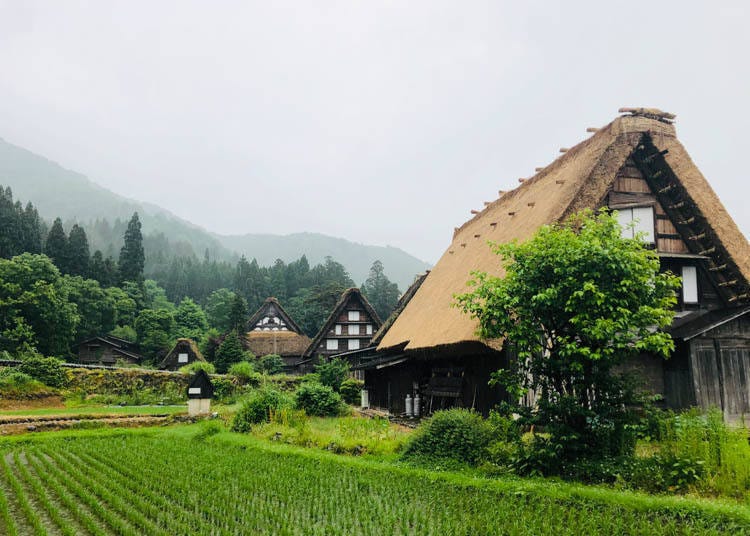
Shirakawa-go's appealing and picturesque views can be said to be consolidated in the main village of the area, the Ogimachi Gassho-Zukuri Village.
That being said, the village is a rather small one in terms of size, as you could probably walk around the entire place in about an hour. There are 60 gassho-zukuri houses (main buildings) here, alongside rows of cafes, eateries, and souvenir shops.
The Shirakawa-Go Ogimachi Village Natural Environment Preservation Association was established in 1971 to uphold three simple principles of the residents' charter: Gassho-zukuri houses were not to be sold, rented out, or destroyed.
The association has promoted preservation activities to that end. That is why many of the gassho-zukuri houses are still inhabited by local residents who live normal lives. The homely atmosphere this creates in the village can be said to be one of its biggest attractions too!
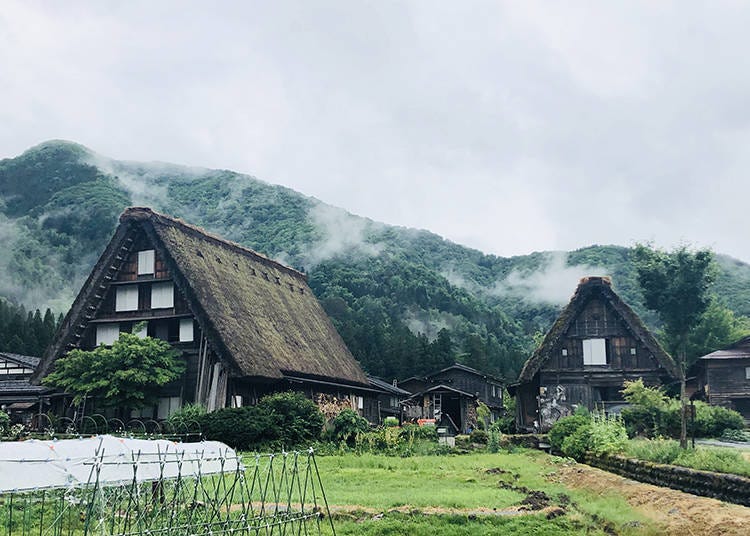
Wada House: Shirakawa-Go's largest Gassho-Zukuri building
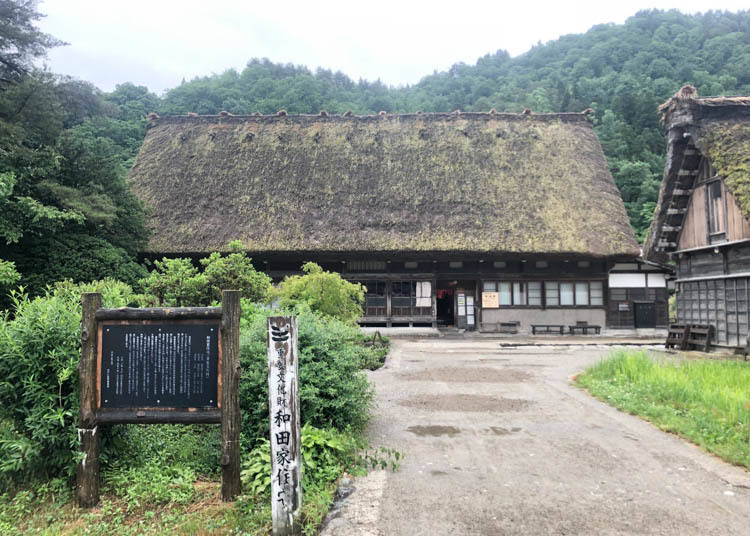
In the northern part of the Ogimachi village is Wada House, a gassho-zukuri building that's listed as one of Japan's important cultural properties.
This impressive structure - an architectural remnant from the early Edo era (1603 to 1868) - is also the largest gassho-zukuri house in Shirakawa-go. Besides the main building, the compound is also home to separated latrines and storehouses with windbreak elements such as mud walls and dry-stone walls. Clearly, the house was initially built for someone of high status in the village.
For a fee, visitors are allowed to tour the buildings' interior, which includes a large hall with a traditional open hearth, a beautifully decorated Buddhist prayer room, and even the attic space!

-
Wada House和田家
- Address 997 Ogi-machi, Shirakawa-mura, Ono-gun, Gifu
- Phone Number 05769-6-1058
・Hours: 9 AM – 5 PM
・Admission: 400 yen (Adults) / 200 yen (Minors)
・Closed: Not fixed
Shiroyama Park Observation Deck (Ogimachi Castle Observation Deck): The best spot for a panoramic view of Shirakawa-Go From Above
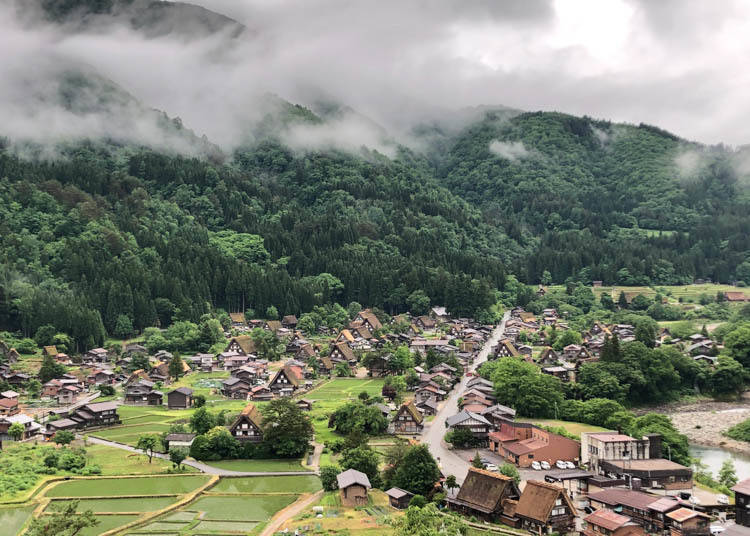
To the east of the Wada House mentioned earlier is a gentle sloping pathway that leads to Shiroyama Park Observation Deck (Ogimachi Castle Observation Deck).
Here is where you'll find breathtaking panoramic views of Shirakawa-go's gassho-zukuri houses from a vantage point - the very same picture often depicted on pamphlets and brochures advertising the village. Why not catch this exhilarating view in the flesh while you're here?
There is a road from Japan National Route 360 leading to the observation deck as well, but this is a rugged and long pathway for pedestrians scale, so consider going around from the back of Wada House if you'll be walking, or utilizing the shuttle bus that travels between Wada House and the observation deck. This bus departs once every 20 minutes and the fare is 200 yen each way.
Shirakawa Hachiman Shrine: Host of the quirky Doburoku Festival
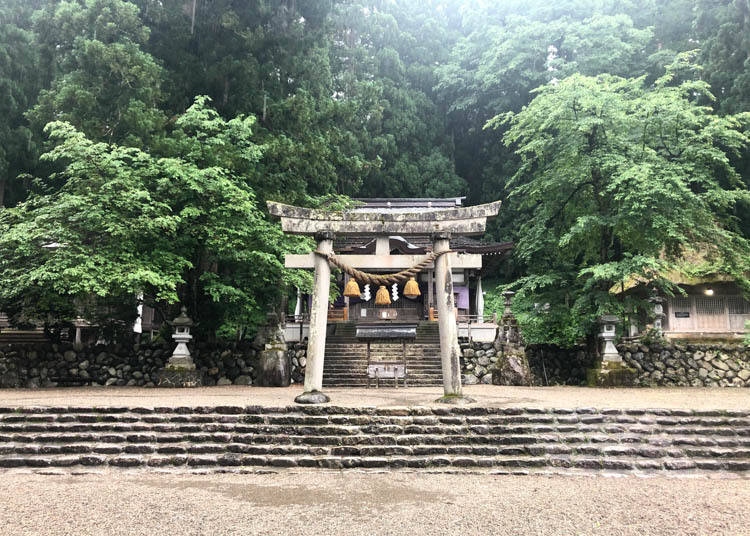
Tucked away in a southern corner of the village is the Shirakawa Hachiman Shrine.
You may be surprised to learn that this stately-looking shrine, surrounded by a solemn air, hosts a quirky festival known as Doburoku Festival every year on October 14 and 15. This is a festival where visitors are treated with fermented doburoku (cloudy sacred alcohol) and lion dances and folk music are performed in dedication to the temple.
The festival is a popular activity that many Japanese flock to from different parts of the country, and we think you'll enjoy the alcohol being offered in this quirky festival that's very uniquely Japanese as well!
Remember, however, that this is still a reputable shrine with a long and honorable history, so try not to let yourself too loose on its premises!
-
Shirakawa Hachiman Shrine白川八幡宮
- Address 559 Ogi-machi, Shirakawa-mura, Ono-gun, Gifu
・Hours: 9 AM – 5 PM
・Admission: Free
・Closed: Open daily
Crossing the Sho River that flows through Shirakawa on Deai Bridge
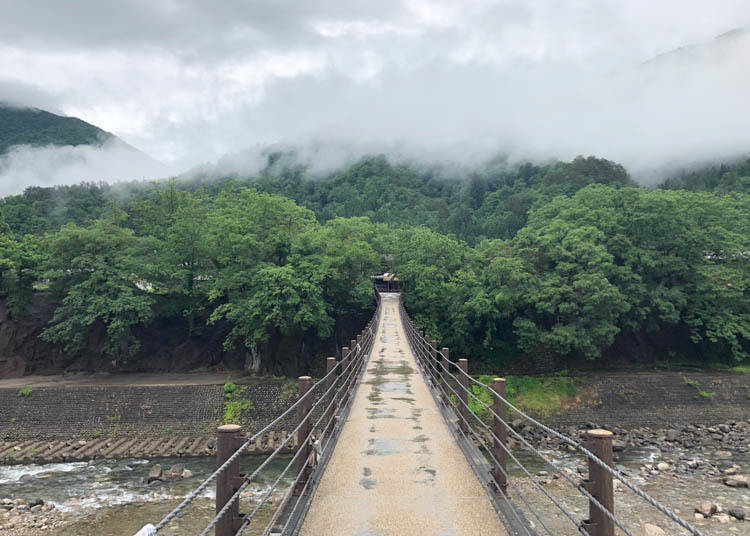
Deai Bridge spans 107 meters (351 feet) in length and connects Sonei Seseragi Carpark to the Ogimachi Gassho-Zukuri Village. This tough, concrete bridge stretches over the Sho River that cuts through Shirakawa and has an interesting feature: When a large group of people stop in the middle of the bridge, the bridge will sway a little, adding a little bit of excitement to an otherwise mundane bridge-crossing!
Even those afraid of heights can cross with peace of mind because the bridge's pathway is very wide and sturdily built. Deai Bridge a little out of the way from the bus terminal, but an excellent spot to enjoy nature's beautiful paintings while gazing at the cool and gentle stream flowing beneath.
The Former Toyama House Museum once accommodated a 45-person family!
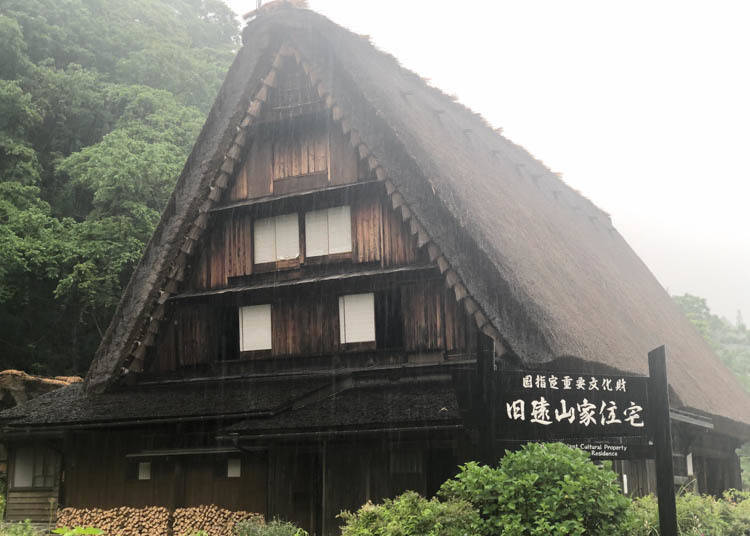
A 15-minute drive away from Ogimachi Gassho-Zukuri Village and located along Japan National Route 156 is the Former Toyama House Museum, a gassho-zukuri resource center that has been listed as a national important cultural property.
Unlike the village in Ogimachi, this house was built in a region where large families were the norm, so the museum premises once housed up to 45 people at once as they pursued their livelihoods in sericulture and potassium nitrate production!
Exhibits describing the lives these big families led back then are available for perusal in the very same building that housed them, and this includes information on Shirakawa's industrial structure back in the day. It's an excellent place to visit for anyone with even a passing interest in social anthropology.
-
Former Toyama House Museum旧遠山家住宅
- Address 125 Oaza Miboro, Shirakawa-mura, Ono-gun, Gifu
- Phone Number 05769-5-2062
・Hours: 10 AM – 4 PM
・Admission: 300 yen (Adults) / 150 yen (Minors)
・Closed: Wednesdays (preceding day if Wednesday is a public holiday)
Enjoy the beauty of Shirakawa-Go throughout the seasons
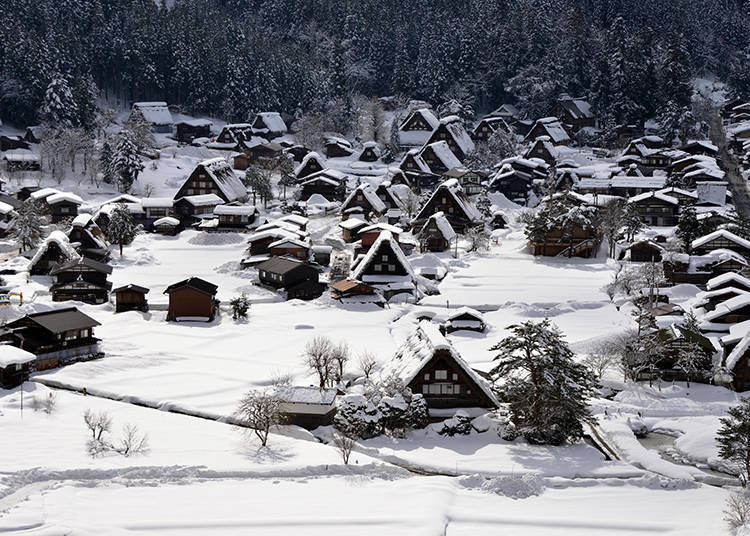
The seasons in Japan are vividly distinct. Differences are intensified in areas like mountainous terrains with significant temperature shifts or dense forests with a majority of broadleaf trees. Shirakawa-go embodies both these characteristics, making its seasonal shifts profoundly noticeable.
From observing the cherry blossoms emerge after winter's snow in spring, to relishing the cool summer winds amidst fresh greenery, or basking in the vibrant autumn colors – Shirakawa-go offers captivating natural beauty. Yet, we think winter stands out as the most enchanting season here.
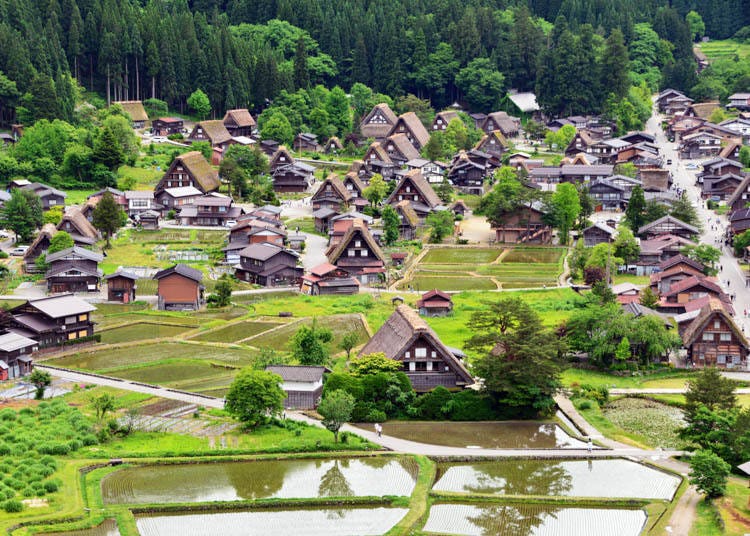
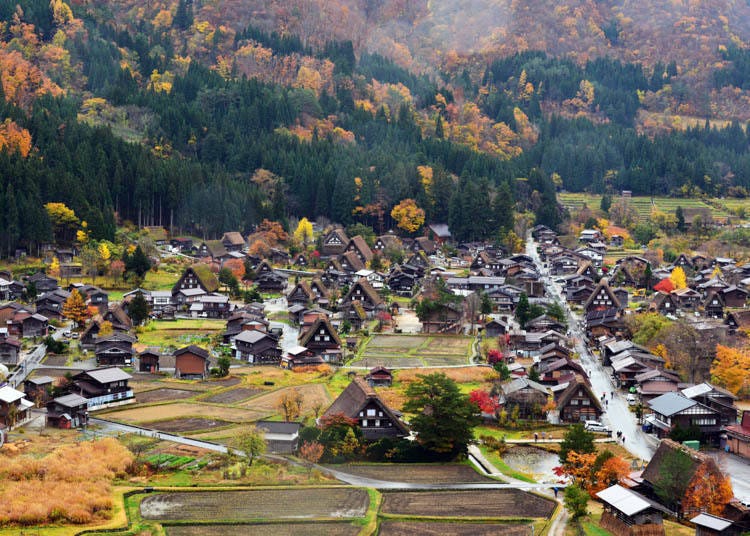
Before reliable public transportation reached Shirakawa-go, few ventured there during its intense snowy winters. To draw visitors during these colder months, the village introduced winter illuminations.
Today, the vision of snow-laden gassho-zukuri houses illuminated at night is a must-see winter attraction in Japan.
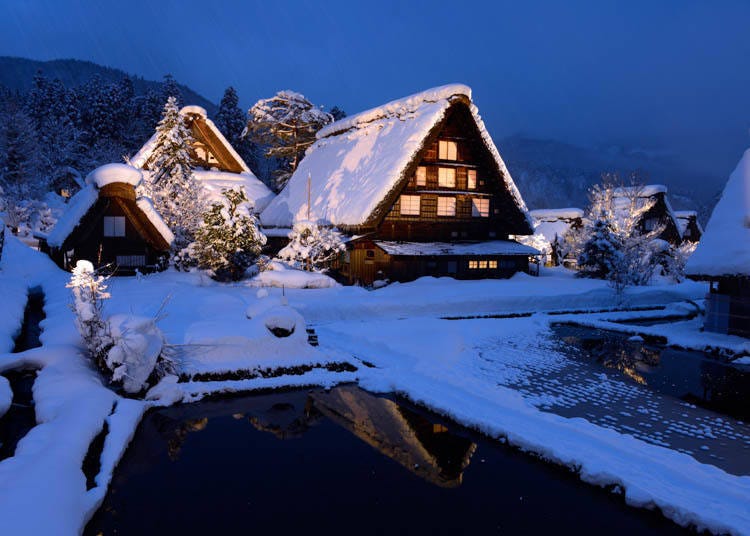
Important things to note when exploring Shirakawa-Go
During your visit, the most important thing to remember is that the people living in the gassho-zukuri houses are private citizens. Therefore, be careful that you do not accidentally trespass on private property while sightseeing. keep your volume down when talking, and do not litter. When taking photographs, try to keep rice paddies, fields being cultivated, or local residents out of shot.
There's a Shirakawa-go guided tour that lasts for about two hours (7,000 yen) if you prefer a more structured way to explore the area. However, not many guided tours here offer English or other language options, so you'll have to bring along your own interpreter if you cannot speak Japanese yourself.
World Heritage Site Gokayama and how it compares with Shirakawa-Go
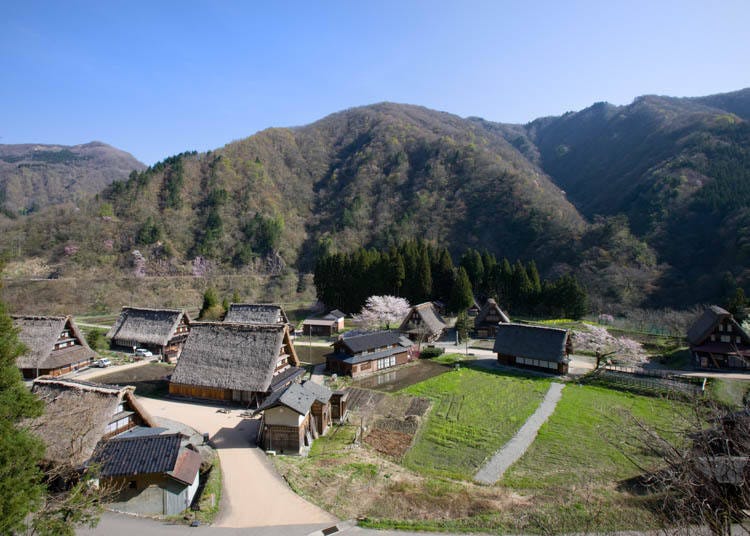
Complete your gassho-zukuri tour by visiting Gokayama's gassho-zukuri village, located in the southwestern corner of Toyama Prefecture. Gokayama's Ainokura and Suganuma villages were both registered as World Heritage Sites in 1995, alongside Shirakawa-go.
From the mounting surfaces at building entrances to the steeper roofs, subtle differences in Gokayama's gassho-zukuri surround the area with a different mood than the one Shirakawa-go is clad in. Production of Gokayama Japanese paper, listed by the country as a traditional craft is still going strong here to this day.
Excursion buses that take visitors to, fro, and between Shirakawa-go and Gokayama cost as low as just 2,600 yen, depending on the itinerary. It takes only about 40 minutes to reach Gokayama's Ainokura village from Shirakawa-go by bus, so it's entirely possible to tour both places in a day if you plan ahead!
Recommended Shirakawa-go Tours
-
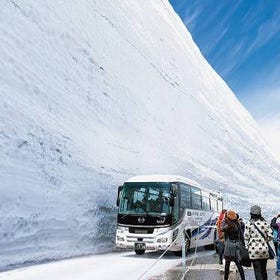 Alpine Route & Shirakawa-go, Hida Takayama with a limited-time "Snow Valley Walk" 2-Day Tour from Tokyo
Alpine Route & Shirakawa-go, Hida Takayama with a limited-time "Snow Valley Walk" 2-Day Tour from Tokyo
(Image: KKday) -
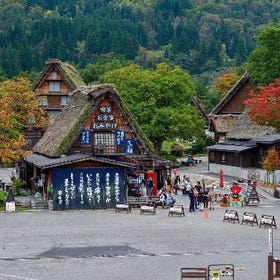 Takayama and Shirakawa-go 1-Day Tour from Nagoya
Takayama and Shirakawa-go 1-Day Tour from Nagoya
(Image: Klook) -
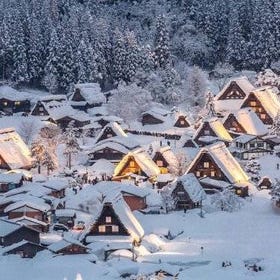 Private Tour of Shirakawago and Gokayama from Kanazawa
Private Tour of Shirakawago and Gokayama from Kanazawa
(Image: Viator) -
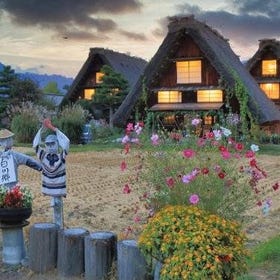 Gokayama/Shirakawago private 1 day tour+Photoshoot by professional photographer
Gokayama/Shirakawago private 1 day tour+Photoshoot by professional photographer
(Image: Viator) -
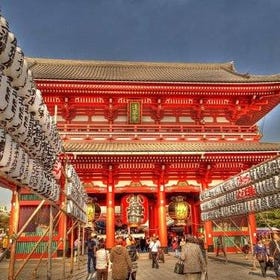 10-Day Golden Route of Japan
10-Day Golden Route of Japan
(Image: Viator)

Shirakawa-go is a hidden scenic spot that few have traveled to. However, the sights and experiences awaiting those who make the long trip are worth every effort put in.
We hope we've convinced you to move Shirakawa-go's place on your bucket list just that little bit higher, and when you do eventually arrive at this beautiful village, we know you'll enjoy it to the fullest!
Text by: Junpei Maruyama. English translation by: Huimin Pan.
Recommended places to stay in Shirakawa-go
-

-
Address
Ijima 908-2, Shirakawa, Gifu, 501-5625
View Map
Vacancy search, reservation
-
from 39,196JPY 1room, 2adults
Check with our partner site as the latest rates, rate details, and guest room requirements may vary.
-
Address
Ijima 908-2, Shirakawa, Gifu, 501-5625
-
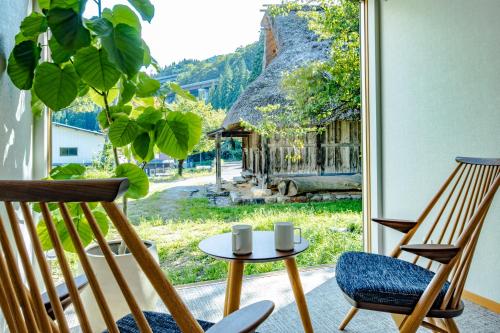
-
Address
318-1 Hatogaya,, Shirakawa, Gifu, 501-5629
View Map
Vacancy search, reservation
-
from 16,200JPY 1room, 2adults
Check with our partner site as the latest rates, rate details, and guest room requirements may vary.
-
Address
318-1 Hatogaya,, Shirakawa, Gifu, 501-5629
-
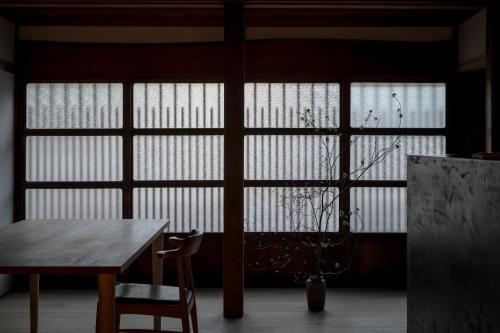
-
Address
Ogimachi 1168-1, Shirakawa, Gifu, 501-5627
View Map
Vacancy search, reservation
-
from 54,000JPY 1room, 2adults
Check with our partner site as the latest rates, rate details, and guest room requirements may vary.
-
Address
Ogimachi 1168-1, Shirakawa, Gifu, 501-5627
-

-
Address
白川村鳩谷445-1, Shirakawa, Gifu, 501-5629
View Map
Vacancy search, reservation
-
from 9,000JPY 1room, 2adults
Check with our partner site as the latest rates, rate details, and guest room requirements may vary.
-
Address
白川村鳩谷445-1, Shirakawa, Gifu, 501-5629
- Area
- Category
*Prices and options mentioned are subject to change.
*Unless stated otherwise, all prices include tax.
Limited time offer: 10% discount coupons available now!
Recommended places for you
-

Discover Osaka Station City: A Journey Through Its Most Fascinating Spots
-

The Complete Guide to the Kintetsu Rail Pass
-

Everything You Need To Know About the Kyoto-Osaka Sightseeing Pass
-

The CASIO S100: How CASIO's Masterpiece Calculator Redefines Business Elegance With Japan-Made Reliability
-

Step Into the Story: Inside Immersive Fort Tokyo
-

15 Must-Try Restaurants in Ikebukuro: From Aged Yakiniku to All-You-Can-Eat Sushi, Plus Adorable Animal Cafés
-
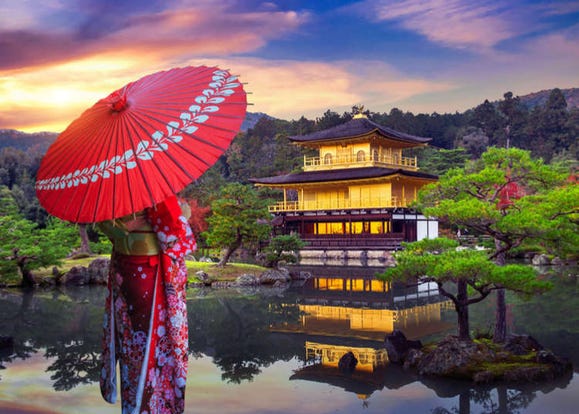
Instagram Evergreen: Japan’s Top 10 World Heritage Sites and National Treasures!
-
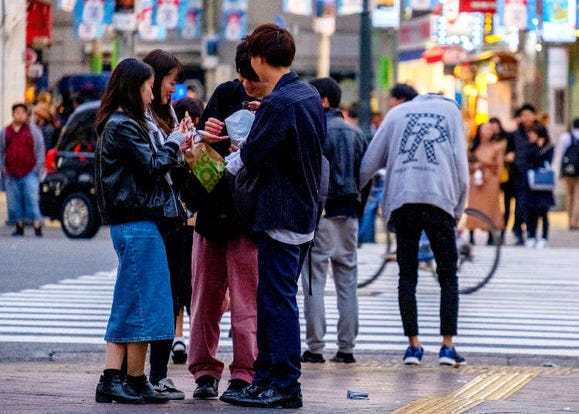
8 Unfamiliar (But Totally Normal) Customs in Japan!
-
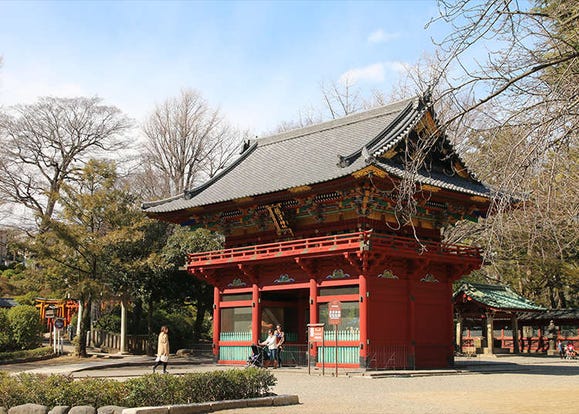
Guide to Tokyo's Old Quarter: 7 Quaint Spots in Yanesen!
-

6 Surprisingly Cheap Things in Japan
-
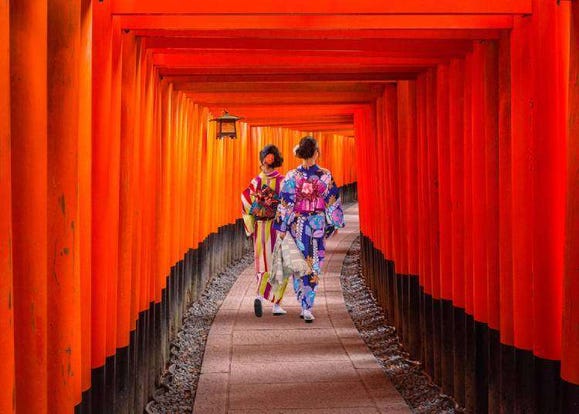
10 Major Cities in Japan: Which One Should Top Your Bucket List?
-
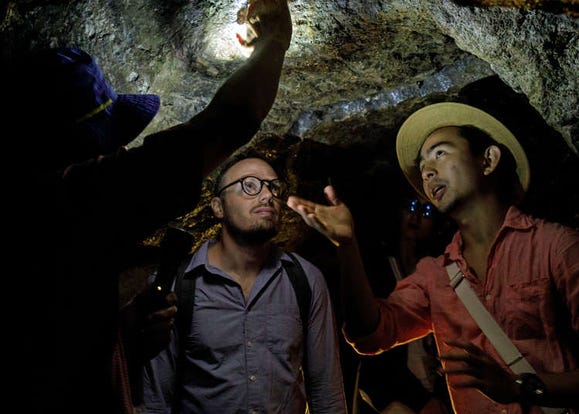
An informative and engaging tour of Iwami Ginzan Silver Mine-a UNESCO World Heritage Site
- #best ramen tokyo
- #what to buy in ameyoko
- #what to bring to japan
- #new years in tokyo
- #best izakaya shinjuku
- #things to do tokyo
- #japanese nail trends
- #what to do in odaiba
- #onsen tattoo friendly tokyo
- #daiso
- #best sushi ginza
- #japanese convenience store snacks
- #best yakiniku shibuya
- #japanese fashion culture
- #best japanese soft drinks













